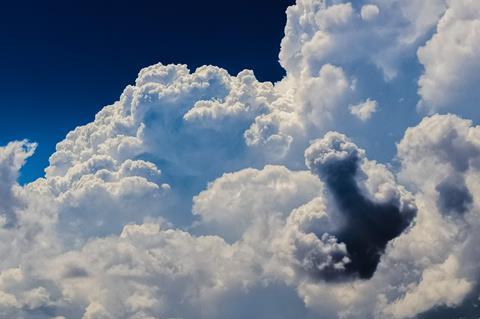A research team from Université Laval and Université Clermont Auvergne has shown that anbiotic resistance genes can be transported by clouds.

“This is the first study to show that clouds harbour antibiotic resistance genes of bacterial origin in concentrations comparable to other natural environments,” says Florent Rossi, first author of the study and postdoctoral fellow in the team of Caroline Duchaine, a professor at Université Laval’s Faculty of Science and Engineering and a researcher at the Quebec Heart and Lung Institute-Université Laval.
To observe this phenomenon, the team sampled clouds at the Puy de Dôme summit, a dormant volcano in France’s Massif Central. At an atmospheric research station perched 1,465 meters above ground, the scientists conducted 12 cloud sampling sessions over two years using high-flow rate ’vacuums’.
Analysis of these samples revealed that they contained about 8,000 bacteria per millilitre of cloud water, on average.
“These bacteria usually live on the surface of vegetation or soil. They are aerosolized by the wind or by human activities, and some of them rise into the atmosphere and participate in the formation of clouds,” explains Florent Rossi.
The concentrations are variable, ranging from 330 to more than 30,000 bacteria per millilitre of cloud water. Between 5% and 50% of these bacteria could be alive and potentially active.
Gene signature
With all their data, the scientists measured the concentration of 29 subtypes of antibiotic-resistance genes carried in atmospheric air masses. The clouds contained, on average, 20,800 copies of antibiotic-resistance genes per millilitre of cloud water.
“Oceanic clouds and continental clouds each have their signature of antibiotic resistance genes. For example, continental clouds contain more antibiotic resistance genes used in animal production,” explains Florent Rossi.
Although airborne transport of antibiotic resistance genes is a natural phenomenon, the widespread use of antibiotics in agriculture and medicine has contributed to the proliferation of these resistant strains and their dissemination in the environment.
“Our study shows that clouds are an important pathway for antibiotic-resistance genes spreading over short and long ranges. Ideally, we would like to locate emission sources resulting from human activities to limit the dispersal of these genes.”
The health effect of the spread of these antibiotic-resistant genes will be something to investigate in future research.
The study was published in the journal Science of The Total Environment. The authors are Florent Rossi, Raphaëlle Péguilhan, Nathalie Turgeon, Marc Veillette, Jean-Luc Baray, Laurent Deguillaume, Pierre Amato, and Caroline Duchaine.







No comments yet